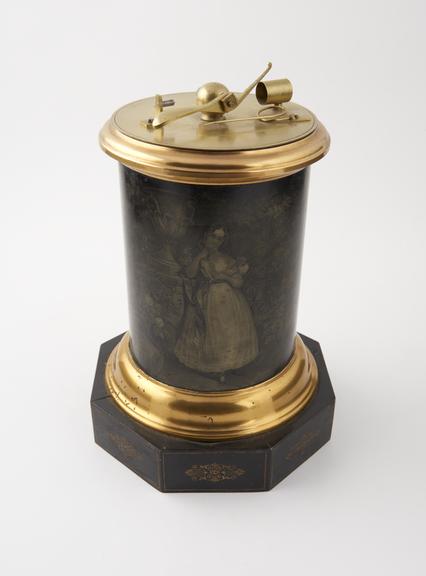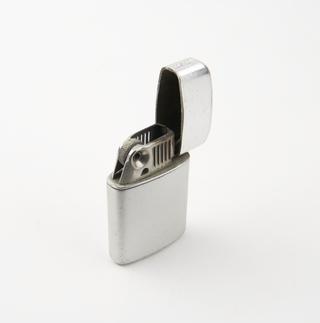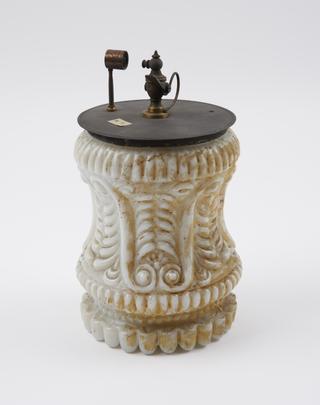
German Döbereiner's Lamp, 1823-1889

Döbereiner Lamp, receptacle of glass, in a round tin stand, with octagonal base and brass cover, japanned black and gilded, decorated with a picture of a young girl, leaning against a stone urn in a garden, Germany, 1823-1889
Although not well known today, Döbereiner's Lamps were some of the first ever lighters to be invented. Developed by German chemist Johann Wolfgang Döbereiner (1780 – 1849) in 1823, they functioned based on chemical reactions between zinc, sulfuric acid, hydrogen gas, and platinum. These reactions produce heat strong enough to set tinder on fire.
After a long time of making fire with steel, flint and tinder, the ‘Feuerzeug’ was innovative and popular. In the 1820’s, more than 20,000 lighters were sold in Germany and Great Britain. One of the buyers was famous German poet Goethe, who eventually funded Döbereiner’s research and even wrote him a poem! Due to the lighter being heavy and dangerous, its popularity was short-lived and ended when the first phosphorus matches were sold in 1827.
This object is part of the Bryant and May fire-making collection, which used to be displayed in a private museum within the Bryant and May match-making factory’s offices. The collection comprises around 1200 objects, dating from the Stone Age to the early 20th century that illustrate the variety of tools and techniques humans across the world have used to create fires.
The collection was mostly acquired by the ornithologist and fire-making enthusiast Edward Bidwell and cared for by the collector Miller Christy. Bidwell collected between the late 19th and early 20th century – when Britain's colonial power was at its peak. Tracing the objects’ provenance is therefore difficult and part of the long and problematic history of colonial exploitation.
Details
- Category:
- Firemaking
- Object Number:
- 1937-682/1315
- Materials:
- glass, tin (metal) and brass (copper, zinc alloy)
- Measurements:
-
overall: 254 mm
- type:
- döbereiner lamp
- credit:
- Wilkinson Sword Ltd.




